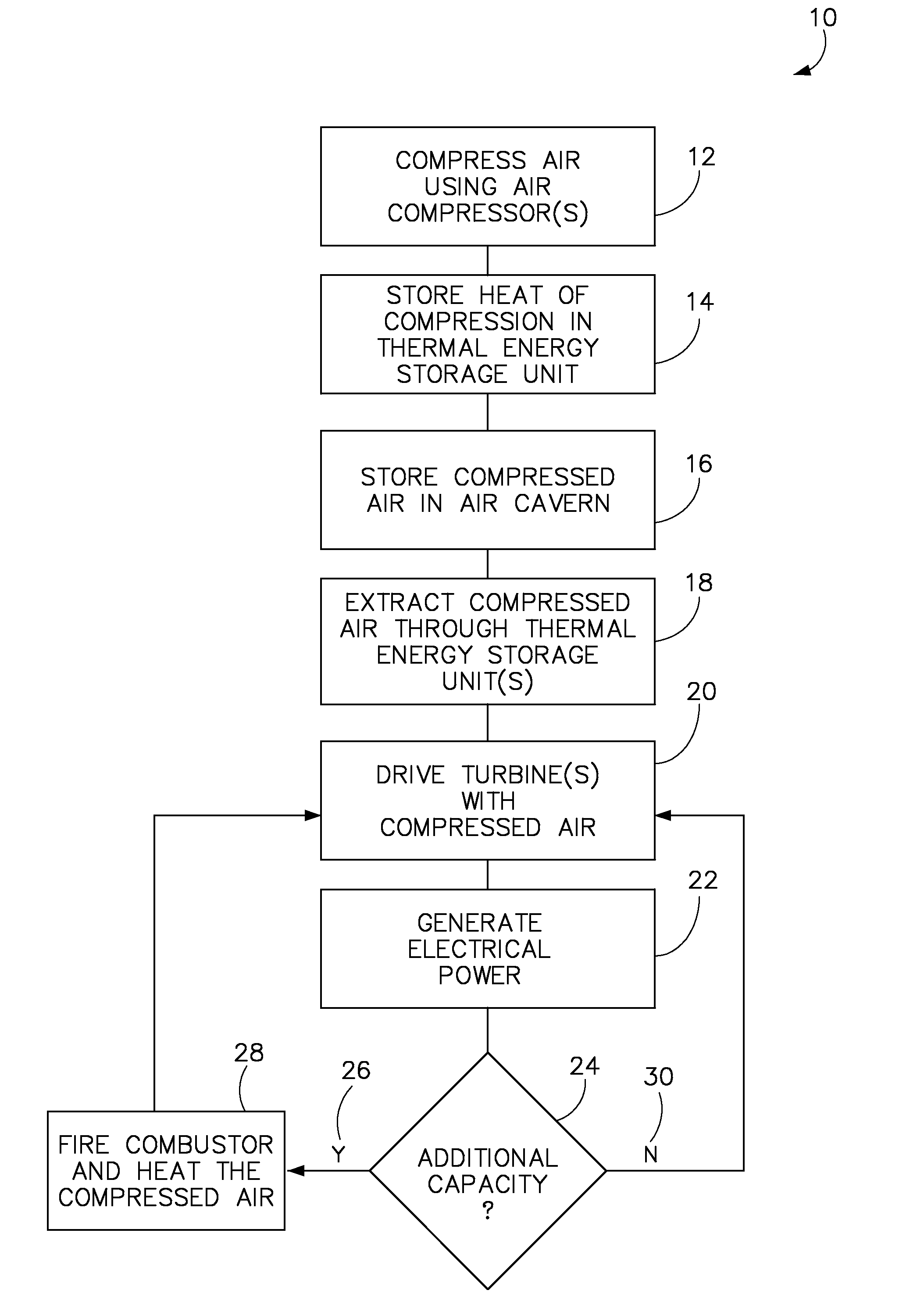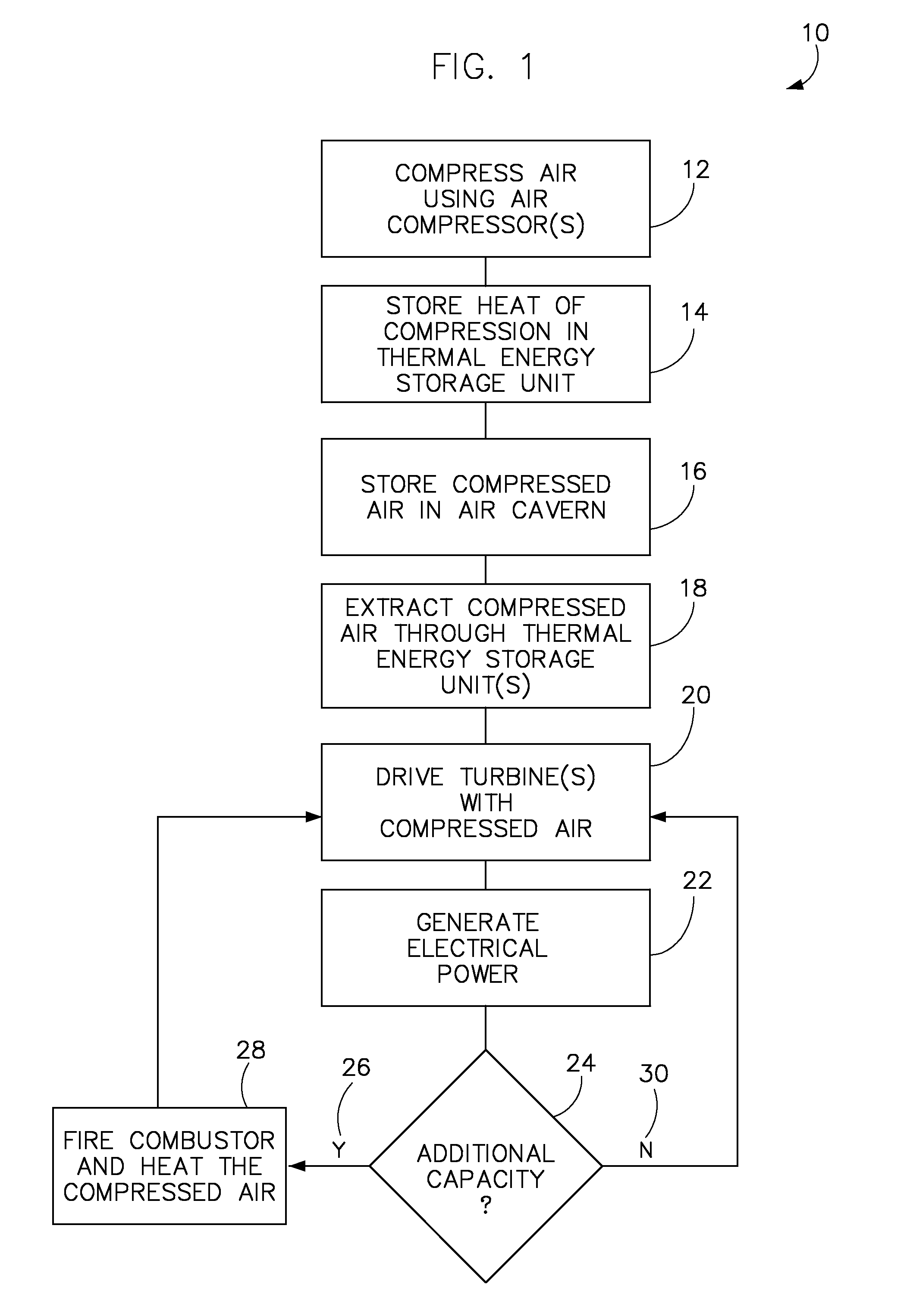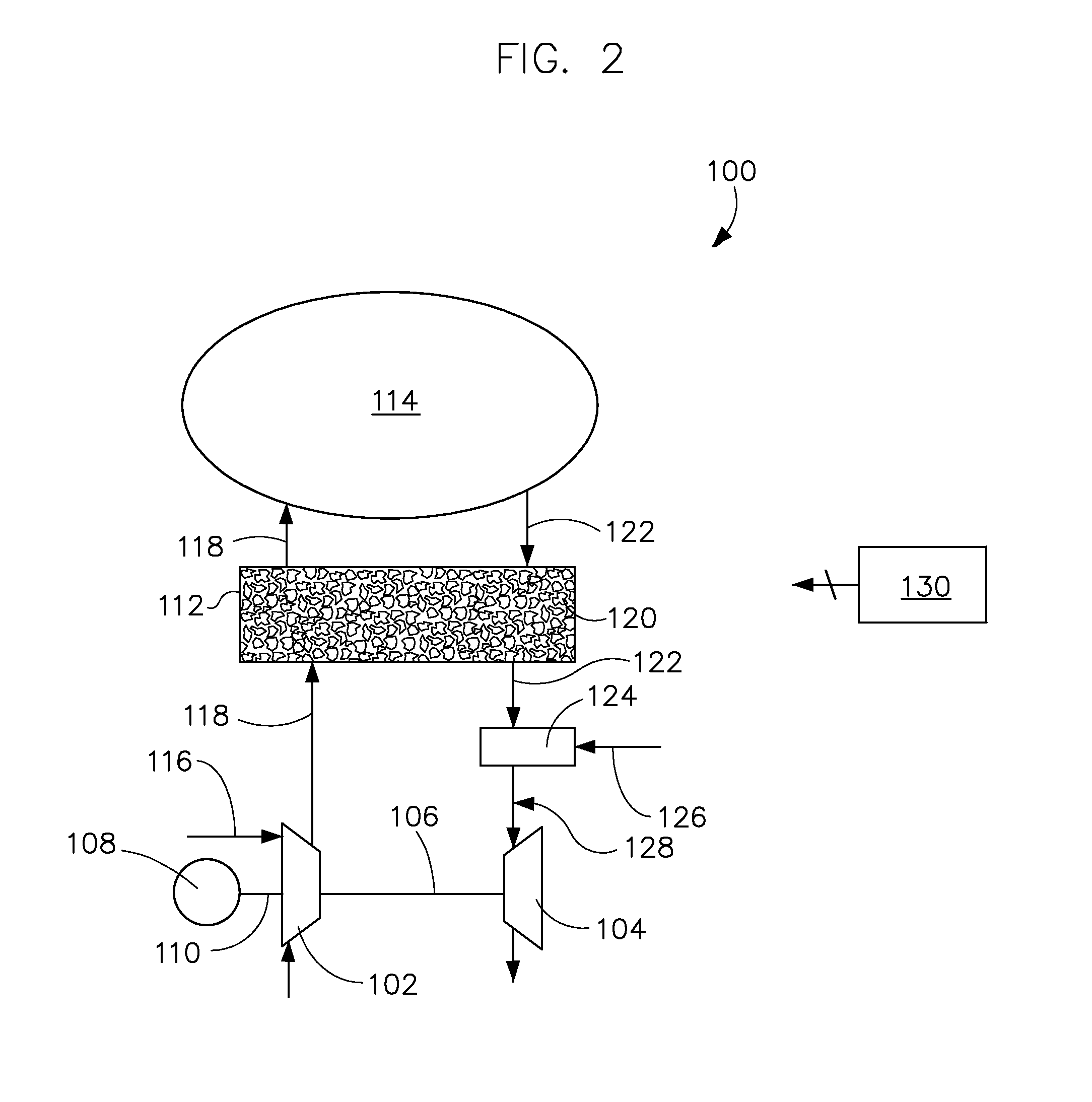Adiabatic compressed air energy storage system with combustor
- Summary
- Abstract
- Description
- Claims
- Application Information
AI Technical Summary
Benefits of technology
Problems solved by technology
Method used
Image
Examples
Embodiment Construction
[0022]According to embodiments of the invention, a system and method are provided that optionally augment an energy content of air passing from a pressurized air cavern to a turbine to generate electrical power therefrom.
[0023]Referring to FIG. 1, a technique 10 for operating a compressed air storage system includes compressing a working fluid such as air using one or more air compressors 12, storing the heat of compression in one or more thermal energy storage units (TES) 14, and storing the compressed air in an air cavern 16, according to embodiments of the invention. Energy is thus stored in one or more TES units as thermal energy that is available for later extraction via heat exchange with air passing therethrough. Air is extracted therefrom 18 through the one or more TES units, and one or more turbines is driven 20 with the compressed air. The turbine(s), in turn, generate electrical power 22 via, for instance, an electrical generator.
[0024]Technique 10 includes determining 24...
PUM
 Login to view more
Login to view more Abstract
Description
Claims
Application Information
 Login to view more
Login to view more - R&D Engineer
- R&D Manager
- IP Professional
- Industry Leading Data Capabilities
- Powerful AI technology
- Patent DNA Extraction
Browse by: Latest US Patents, China's latest patents, Technical Efficacy Thesaurus, Application Domain, Technology Topic.
© 2024 PatSnap. All rights reserved.Legal|Privacy policy|Modern Slavery Act Transparency Statement|Sitemap



